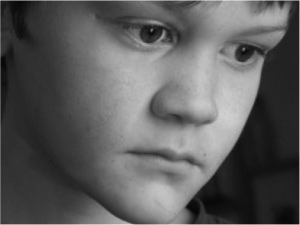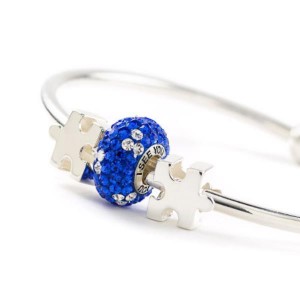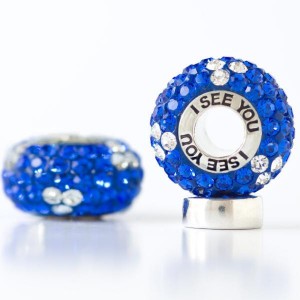If you’ve checked out Apple iTunes Store’s educational gaming category, chances are you’ve heard of Lumosity. Lumosity’s mobile app, downloaded more than 10 million times, is often located at the very top of this educational gaming category. With over 40 million members joining Lumosity.com, this “brain training” program is gaining national popularity.
Lumosity was founded in 2005 by a neuroscience research company based in San Francisco, California. The company created a cognitive training program consisting of roughly 40 games and exercises focusing on the areas of memory, attention, flexibility, speed of processing, and problem solving. The games, designed to be both challenging and fun, aim to improve each player’s mental abilities. Creators believe the program’s popularity can be attributed to the fact that the games appeal to learners of all ages.
Games, such as Raindrops, test individual math skills, asking the player to solve a series of math problems before the raindrops hit the ground. Other games may focus on more abstract skills, such as speed or spatial skills. For example, Penguin Pursuit involves steering a penguin through a rotating iceberg maze in a race against other hungry penguin opponents in search of food.


Lumosity’s site features findings of several completed research studies, verifying the cognitive benefits of the program. Lumosity claims their program offers mental benefits by fostering neuroplasticity. Neuroplasticity refers to the brain’s ability to physically change when faced with new challenges. This occurs because different daily tasks require the use of different neural pathways. Neural pathways will grow stronger, or be pruned away, depending on frequency of use. Lumosity provides a variety of new exercises that encourage the brain to develop and strengthen neural pathways. Each game adapts to individual developmental levels to ensure the brain stays challenged.
 When first signing up for Lumosity, members are asked to note the areas they wish to improve upon (such as avoiding distractions, multitasking, or precision). The program then determines your “brain profile” and provides you with a series of puzzles and exercises focused on your individualized training targets.
When first signing up for Lumosity, members are asked to note the areas they wish to improve upon (such as avoiding distractions, multitasking, or precision). The program then determines your “brain profile” and provides you with a series of puzzles and exercises focused on your individualized training targets.
These priority areas vary based on your developmental level and personal needs. This allows individuals with a potential diagnosis of a disorder, such as autism, to focus on areas they may be experiencing deficits in. Individuals, both with disorders and without, can take advantage of this game by thoughtfully identifying cognitive areas needing improvement. For example, training targets for an individual with autism may include social cognition, theory of mind, executive functions, and central coherence.
Social cognition refers to the processing of social information (encoding, storing, retrieving, and applying information to social situations). One hallmark symptom of Autism Spectrum Disorder (ASD) is impairment in these social cognitive skills (Greene, et al., 2011). For example, Johnny has high functioning autism and performs well academically, but avoids social situations. He struggles to follow and contribute appropriately during conversations with his peers. Lumosity’s research claims that program participation can improve recall and concentration. Improvements in these areas may benefit social cognitive functions in kids such as Johnny.
Theory of mind is the ability of an individual to reason about the beliefs or intentions of others. Many individuals with ASDs struggle to develop this mental state of understanding. For example, Sally, a young girl with Aspergers Syndrome, was shown a Crest Toothpaste box and asked to guess what was inside of the box. Sally guessed toothpaste. She then opened the box and saw she was incorrect. Instead of toothpaste, there was a bottle of shampoo inside the box. Next, Sally was told that her dad was going to come into the room. She was asked what her father would say was in the box. Unable to separate what was in her mind (based on her experience), Sally said that her dad would think there was a bottle of shampoo in the box. Two of Lumosity’s potential target areas include mental flexibility and thinking outside the box. Practice in these areas and increased mental flexibility may better allow individuals such as Sally to understand and attribute mental states to others.
Executive function refers to a set of mental processes involving goal directed activity. An individual’s executive function includes the ability to plan strategically, control impulses, and think abstractly. Studies investigating the brain systems of individuals with ASDs reveal executive function is affected in autism (O’Hearn, et al., 2008). For example, it is common for children with ASDs to exhibit difficulty controlling impulses. Lumosity claims that data from their program reveal “[…] It is possible to train the cognitive skills that underlie function no matter what your current level of cognitive ability.” Improvements in executive function may lead affected children to exhibit greater impulse control. To read more about this specific study conducted at Stanford University, click here.
The “brain profile” is an essential feature for this program’s success. However, in surveying new members, Lumosity does not ask specific questions regarding existing disorders. Therefore it is important that the participant is able to offer honest and objective answers in assessing personal areas of strengths and weaknesses. This may be a potential challenge for individuals with ASDs. It may also be difficult for a parent or caregiver to offer an objective evaluation. Thus, consulting a neurologist, or other clinician, may be a helpful step in helping you and your child put together an accurate “brain profile.”
There is no shortage of research on Lumosity, the largest and fastest growing database on human cognition. To learn more about the completed studies supporting the exciting claims behind this “brain training” program, visit the Lumosity homepage. This program is a fun, addictive way to keep your mind sharp. You may find yourself so glued to the penguin on your screen that you forget you’re doing “cognitive homework” at the same time. Not only that, but this may be the only workout you can get in without actually leaving your couch!
Happy “exercising!”
Citations:
Greene DJ, Colich N, Iacoboni M, Zaidel E, Bookheimer SY, & Dapretto M (2011). Atypical neural networks for social orienting in autism spectrum disorders. NeuroImage, 56 (1), 354-62 PMID: 21334443
Kesler et al (2013). Cognitive Training for Improving Executive Function in Chemotherapy-Treated Breast Cancer Survivors. Clinical Breast Cancer – 06 May 2013. http://www.clinical-breast-cancer.com/article/S1526-8209(13)00049-9/abstract
O’Hearn K, Asato M, Ordaz S, Luna B. Neurodevelopment and executive function in autism. Dev Psychopathol. 2008;5:1103–1132. doi: 10.1017/S0954579408000527.
 A common symptom in individuals diagnosed with autism spectrum disorders (ASDs) is the inability to read facial expressions or pick up on subtle social cues, making it difficult to connect with others. Research studies examining expressivity in children with ASDs also find patterns of flat affect and bizarre facial expressivity. Flat affect refers to a lack of emotional reactivity, meaning any sort of facial animation or expressive gestures are very minimal.
A common symptom in individuals diagnosed with autism spectrum disorders (ASDs) is the inability to read facial expressions or pick up on subtle social cues, making it difficult to connect with others. Research studies examining expressivity in children with ASDs also find patterns of flat affect and bizarre facial expressivity. Flat affect refers to a lack of emotional reactivity, meaning any sort of facial animation or expressive gestures are very minimal.
















